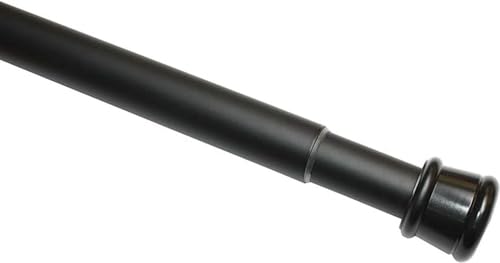Landlords are required to replace carpet when it is damaged beyond normal wear and tear. In such cases, the landlord is responsible for the replacement costs.
As a landlord, it is essential to maintain your rental property to ensure the comfort and safety of your tenants. One aspect of property upkeep that often requires attention is the carpet. Over time, carpets can endure wear and tear due to tenant usage, resulting in damage that may require replacement.
However, knowing when to replace the carpet can be a bit challenging for landlords. We will explore the circumstances under which landlords are obligated to replace carpet in rental units. By understanding these factors, you can ensure that your property remains well-maintained while adhering to legal responsibilities and providing a pleasant living environment for your tenants.
Understanding Landlord Responsibilities
As a landlord, it’s essential to be well-versed in your responsibilities to provide a safe and habitable living environment for your tenants. Understanding when you need to replace the carpet in your rental property is crucial for ensuring tenant satisfaction and complying with legal requirements. Let’s explore the specific responsibilities landlords have when it comes to carpet replacement.
Landlord’s Duty To Provide Habitability
A landlord’s primary duty is to ensure that the rental property is habitable. This duty includes maintaining the property in a safe and clean condition. When it comes to carpet, it means ensuring that it remains in good condition, free from hazards or potential health risks.
Here are some key considerations regarding a landlord’s duty to provide habitability:
- The carpet should be free from mold, mildew, or any other hazardous substances that could affect the health of the tenants.
- It should be clean and properly maintained, allowing tenants to live comfortably and without unnecessary inconvenience.
- Any tears, stains, or damages to the carpet should be addressed promptly to prevent further deterioration.
Specific Requirements For Carpet Replacement
While the exact requirements for carpet replacement may vary depending on local regulations and lease agreements, there are certain situations that typically warrant replacement. Understanding these specific requirements can help you determine the appropriate response as a landlord.
Consider the following scenarios that may necessitate carpet replacement:
| Situation | Action Required |
|---|---|
| The carpet has reached the end of its lifespan and is no longer usable. | Replacing the carpet entirely is necessary to maintain habitability and tenant satisfaction. |
| The carpet has significant damage, such as large tears, burns, or stains that cannot be remedied. | Replacing the affected areas or the entire carpet may be required, depending on the severity of the damage. |
| The carpet has an infestation of pests, such as fleas or bed bugs, that cannot be effectively treated. | Replacing the carpet is often the best solution to eliminate the pest problem completely. |
Remember, having a clearly outlined carpet replacement policy in your lease agreement can help ensure that both you and your tenants are on the same page regarding maintenance responsibilities and expectations. It is important to consult with local laws and regulations to ensure compliance with specific carpet replacement requirements.
Determining Carpet Replacement
When it comes to managing rental properties, one important task for landlords is determining when to replace carpet. Understanding the factors that contribute to carpet replacement can help landlords make informed decisions and maintain their properties in good condition. In this post, we will explore two key aspects that help determine carpet replacement: differentiating between normal wear and tear and damage, and evaluating the carpet’s lifespan.
Normal Wear And Tear Vs. Damage
It is crucial for landlords to distinguish between normal wear and tear and damage to determine if carpet replacement is necessary. Normal wear and tear occur naturally over time and can include minor fading, slight discoloration, or a few small stains. On the other hand, damage refers to any significant harm caused by tenants, such as burn marks, large stains, or tears in the carpet.
Understanding the difference between the two is essential as landlords are responsible for normal wear and tear, whereas tenants may be liable for damage. By carefully evaluating the condition of the carpet, landlords can determine if replacement is necessary or if it can be repaired or cleaned professionally.
Evaluating Carpet’s Lifespan
In addition to recognizing normal wear and tear versus damage, assessing the carpet’s lifespan is another crucial factor in determining when to replace it. The lifespan of carpet will vary depending on various elements, including the quality of materials, the amount of foot traffic, and how well it has been maintained over time.
High-quality carpets, properly cared for, can last up to 10 years or more, whereas low-quality carpets might need replacement after just 3-5 years. To evaluate the carpet’s lifespan, landlords can consider the following factors:
- Quality of Materials: Determine if the carpet is made of durable and high-quality materials that are designed to withstand everyday use.
- Care and Maintenance: Assess whether the carpet has been regularly cleaned and professionally maintained, as proper care can extend its lifespan.
- Visible Signs of Wear: Look for noticeable signs of wear such as fraying edges, excessive matting, or areas with missing fibers.
- Odor or Allergies: Consider whether the carpet has developed persistent odors or if tenants are experiencing increased allergies, as these signs may indicate a need for replacement.
By carefully evaluating these factors, landlords can determine if the carpet has reached the end of its lifespan and requires replacement to maintain the property’s value and appeal.
Steps To Take For Carpet Replacement
Carpet replacement is a crucial consideration for landlords, who are responsible for ensuring a safe and habitable living environment for their tenants. Knowing when to replace carpet depends on factors such as wear and tear, damage, and health hazards like mold or infestations.
Regular inspections, maintenance, and addressing tenant complaints promptly can help landlords stay on top of carpet replacement needs.
Notifying Landlord And Documenting The Condition
When considering carpet replacement, it is crucial to initiate the process by notifying your landlord about the carpet’s condition and your concerns. This step is important as it allows your landlord to understand the need for carpet replacement and take necessary actions accordingly.
In order to ensure a smooth process, it is important to document the carpet’s condition thoroughly. Take clear photographs or videos of the carpet, focusing on any stains, tears, or signs of wear and tear. By documenting the current state, you have concrete evidence to support your claim for carpet replacement.
Negotiating With The Landlord
Once you have notified your landlord and presented the evidence, the next step is to negotiate the carpet replacement. Initiate a conversation with your landlord, clearly stating the reasons for replacement and presenting your documentation as evidence.
During the negotiation, it is important to approach the conversation with a polite and professional demeanor. Clearly express your concerns and the impact the deteriorated carpet may have on the overall living experience. Emphasize the benefits of replacing the carpet, such as improved aesthetics, increased property value, and tenant satisfaction.
Be open to discussing potential compromises or alternatives with your landlord. This may include cost-sharing, selecting a more cost-effective carpet option, or agreeing to a specific timeline for replacement. By maintaining a positive and cooperative approach, you increase your chances of reaching a mutually beneficial agreement.
Seeking Legal Action If Necessary
If negotiations with your landlord prove unsuccessful and the condition of the carpet poses serious health or safety concerns, you may need to explore legal options. Before taking any legal action, it is advisable to consult with a lawyer experienced in landlord-tenant disputes.
Your lawyer will guide you through the process of documenting your complaints, gathering evidence, and adhering to legal obligations. They will also help determine which legal avenues are available, such as filing a complaint with the local housing authority or pursuing legal action in court.
Remember, seeking legal action should always be the last resort. However, knowing your rights as a tenant and understanding the legal options available can provide you with the necessary protection and ensure a fair resolution.
Frequently Asked Questions Of When Do Landlords Have To Replace Carpet?
What Are The Renters Laws For Carpet In Texas?
In Texas, renters’ laws for carpet state that landlords are responsible for maintaining the carpet’s overall condition, such as repairing or replacing worn or damaged carpets. However, tenants are generally responsible for any damage beyond normal wear and tear, and they must inform landlords of any issues promptly.
What Is Normal Wear And Tear In Texas?
Normal wear and tear in Texas refers to the gradual deterioration of a rental property resulting from everyday use. It includes minor issues like faded paint or worn-out carpets that occur naturally over time. However, excessive damage caused by abuse or negligence is not considered normal wear and tear.
Do Landlords Have To Replace Carpet In Iowa?
Yes, landlords in Iowa may need to replace carpet if it is damaged beyond normal wear and tear.
What Is Considered Normal Wear And Tear Ohio?
Normal wear and tear in Ohio refers to the gradual deterioration or damage that occurs from regular use of a property. It includes minor scuffs, wear on carpets or paint, and small cracks. However, it does not include excessive damage or negligence.
Landlords cannot deduct from security deposits for normal wear and tear.
Does A Landlord Have To Replace Carpet Between Tenants?
Yes, landlords are typically responsible for replacing carpet between tenants to maintain habitability and attract new renters.
Conclusion
Landlords have a responsibility to replace carpet in rental properties when it reaches its maximum lifespan, becomes a health hazard, or is damaged beyond repair. Understanding the legal obligations and maintaining regular inspections can help landlords ensure the safety and comfort of their tenants.
By prioritizing carpet replacement, landlords can enhance the overall appeal and value of their rental units, ultimately benefiting both parties involved in the rental agreement.
I am a full service Real Estate Professional in Brevard, FL, that takes my clients & career very
seriously.



Leave a Reply